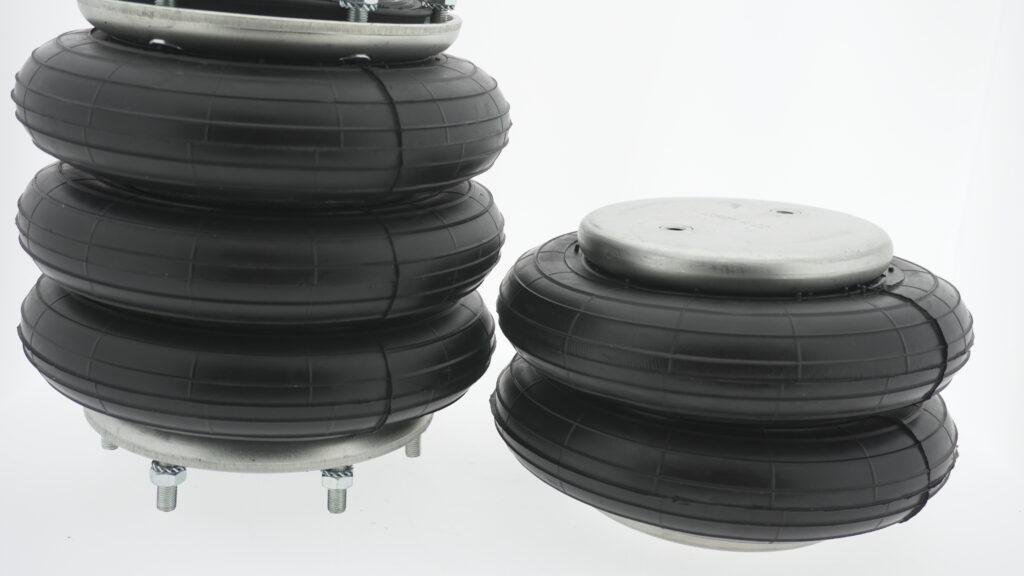
Proper handling ensures optimal performance
To lubricate and maintain air spring components, we must focus on both external and internal parts. Routine visual inspection is essential. We check for cracks, delamination, or material fatigue. The air springs should be cleaned with a neutral pH detergent to remove contaminants. Never use oil-based cleaners on the rubber surface. If metallic parts show signs of oxidation, we apply a rust-inhibiting spray. For joints and studs, we recommend a silicone-based lubricant, not grease. Grease can degrade rubber air bellows under high load conditions. All mounting bolts must be checked for proper torque. If over-tightened, it can deform the air bellow structure. A maintenance checklist ensures consistent quality. We log each check and monitor for developing trends. Leaks are identified using a soap solution test around fittings. Any sign of bubbling warrants further inspection. Correct lubrication practices extend the lifespan of air springs and reduce unexpected failures.
Preventing premature wear through best practices
Correct maintenance techniques help prevent wear on air springs in harsh industrial environments. Overexposure to UV or ozone can degrade the rubber material, so we ensure components are protected. We shield installations from direct sunlight and ozone-producing equipment. For indoor use, placing air bellows away from electrical panels is beneficial. In wash-down areas, stainless steel end plates resist corrosion. Regular maintenance includes inspecting hose connections and valve integrity. Misalignment during operation can cause excessive lateral stress. We recommend checking alignment quarterly. If the air spring includes bead rings, ensure they are seated correctly. We do not lubricate the diaphragm or internal cavity—compressed air does not require it. However, fittings may require light lubrication during installation. Applying the wrong product can lead to seal degradation. Maintenance protocols must align with manufacturer specifications and environmental conditions. These best practices ensure air spring component longevity.
Protective measures against contaminant exposure
Industrial contaminants can reduce the lifespan of air springs if not managed. We install protective covers over air bellows in high-dust environments. In high-moisture conditions, we apply dielectric grease to terminals and fasteners to prevent corrosion. The air spring rubber should remain clean and dry. Water-based cleaning solutions are preferred over solvents. Oil-based products can cause rubber cracking. Metal end plates require inspection for pitting or surface corrosion. Early signs are visible through color changes. We polish or replace these parts to maintain system integrity. Fittings must be checked for securement and leak-free performance. We recommend color-coded fittings for easier maintenance routines. Air dryers in the system reduce moisture inside the bellows, preventing internal damage. We train operators to recognize hissing or vibration changes. These can indicate leaks or air spring failure. Proactive maintenance procedures reduce downtime and repair costs.
Storage practices for unused components
Proper storage of air springs helps maintain their structural integrity. We avoid stacking components to prevent deformation of the rubber bellows. Storage temperature should be between 10°C and 25°C. Humidity must be below 70% to prevent condensation. The components are placed on shelves away from ozone sources like fluorescent lights or motors. Rubber seals must not contact petroleum-based materials. We use protective sleeves for long-term storage. Inventory is rotated using FIFO to avoid aging stock. We label storage areas to prevent confusion between old and new stock. When retrieving a stored air spring, we inspect for flat spots or cracks. If present, the unit is discarded. Shelf life is generally five years under optimal conditions. Clean and dry environments are critical. These procedures ensure that all stored air spring components remain in working condition.
Ensuring long-term system reliability
Consistent air spring maintenance results in improved reliability and reduced unplanned downtime. We review maintenance logs monthly to identify patterns. Components nearing end-of-life are flagged for early replacement. This proactive approach helps maintain uptime. By monitoring air pressure, we prevent overloading and uneven wear. It is important that operators understand basic inspection techniques. We offer training sessions to improve equipment handling. Real-time monitoring systems help detect subtle leaks or failures. These systems alert staff before mechanical breakdown occurs. Ensuring correct installation torque, regular inspection, and correct lubrication methods help maintain system performance. Our clients report a reduction in failures when following this maintenance protocol. Long-term savings on repair costs justify the investment. Well-maintained air springs operate more quietly and efficiently. They extend the life of surrounding mechanical structures. For critical applications, we recommend quarterly preventive maintenance. We always conclude each session by checking pressure balance and visual integrity.
